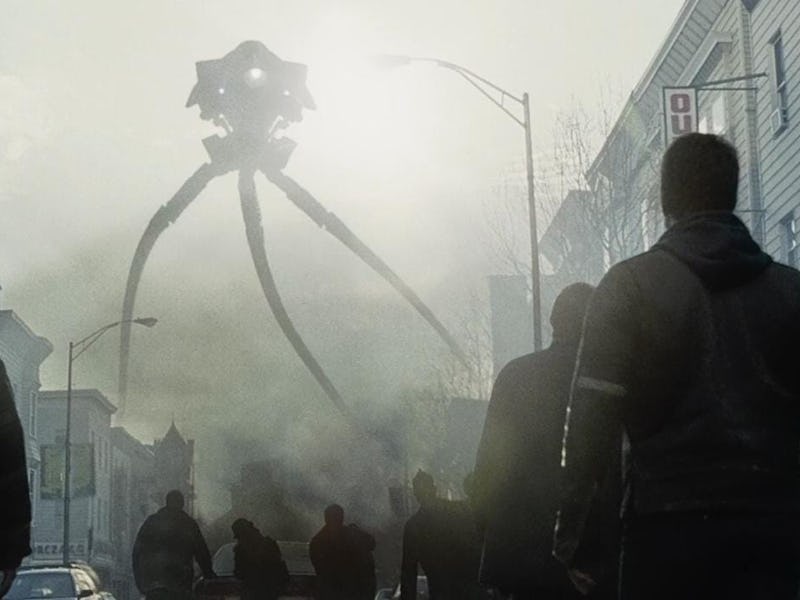Tom Cruise and Steven Spielberg’s Brief Venture Into Sci-Fi Gave Us an Underrated Alien Thriller
The invasion of Earth never looked this good.

The most unrealistic thing about Steven Spielberg’s 2005 War of the Worlds remake is that Tom Cruise plays a character named Ray. Given all the heroic leads Cruise has played, thinking of him as a Ray seems impossible. Ethan, Peter, and even John are all fine for Cruise. But he’s no Ray. It feels like an unintentional nod to the “Martian heat-ray” weapon so prevalent in the 1953 movie and H.G. Wells’ original 1898 book.
But truly shocking detail about this version of War of the Worlds is that it has no right to be as good as it is. Spielberg’s take on the classic is one of the best alien invasion movies of all time, and still looks and feels amazing today. It’s worth revisiting now that it’s on Netflix.
Wells’ novel has been adapted countless times, but there are really only three versions that matter: the 1938 Orson Welles radio play, the 1953 George Pal film, and this 2005 version. The latter may be visually and thematically closest to the novel, which is surprising given that the stories of the human characters are completely rewritten. But the threat of the Martian attack feels appropriately frightening and, crucially, the invaders themselves feel unknowable.
Years before Cloverfield repopularized alien mysteries, Spielberg made the smart decision to keep the appearance of his aliens a near-total secret, even from many people working on the film. Nothing about the film was spoiled by its trailers, and the movie’s tension and paranoia add a sense of grounded realism that certainly doesn’t exist in the novel, and is generally rare in Tom Cruise movies. Love him or hate him, we don’t often turn to Cruise for a grounded, nuanced performance.
And so the most controversial compliment one can pay Cruise here is that he’s not phoning it in. Unlike the equally great The Edge of Tomorrow, you can’t really imagine War of the Worlds working with a different lead. Everything that works about this movie comes down to Cruise playing a divorced dad who’s — wait for it — forced to reconnect with his wife (Miranda Otto) and kids by the invasion. It’s corny, but it makes the heart of the movie work. Spielberg tinkers with the science fiction of the film to make it slightly more realistic, but none of it would land if we didn’t believe that Cruise was trying to protect his daughter, Rachel, played expertly by then-child prodigy, Dakota Fanning.
Steven Spielberg, Dakota Fanning, and Tom Cruise made for an unexpected dream team.
Fanning’s acting chops force Cruise to work harder, which adds layers as the alien invasion stress gets tenser and tenser. If this script were written today, you’d be required to cast Pedro Pascal, but in 2005 Cruise was the only choice, and he pulled it off perfectly.
In the end, the war part of War of the Worlds ends the way most versions end. The invaders can’t handle Earth’s microbes, so the invasion stalls out rather than suffering a decisive military defeat. War of the Worlds is true to the book, but also better than it. Wells knew the number one problem with lifeforms moving from one planet to another would be the unknowable microscopic differences in the respective environments, but what the movie did was make that hard sci-fi speculation into a human drama we cared about. War of the Worlds is far from the greatest sci-fi ever created, but when we think about why people go to the movies and why sci-fi intrigues, the film presents an unstoppable combination.